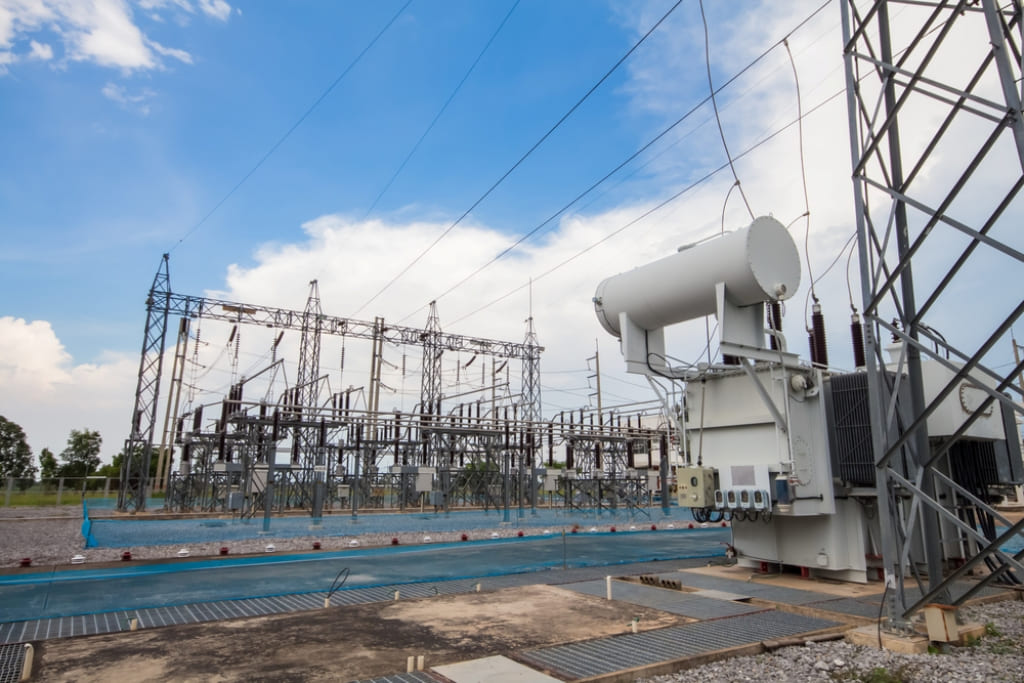The quality of transformer oil during transformer operation can be determined by taking and analyzing samples and comparing certain parameters against the standards. These parameters include acid number, dielectric strength, dissipation factor, settling point, flashpoint etc. In this article we will look at transformer oil acid neutralization.
What is the acid number?
Let us begin with a definition. Acid number is a parameter which indicates the amount of acids in transformer oil and is measured in mg KOH/g. Acid number has a maximum limit both for fresh and used oil. Acidity of fresh oil must not exceed 0.01-0.02 mg KOH/g. Some acidity is apparently acceptable. However. this does not apply to low molecular acids, which must not be present in the oil to prevent corrosion.
Literature lists various numbers for oils in use. This is due to various equipment types and voltage rating. A good average is 0.1 mg KOH/g limit. If acidity grows further, transformer oil acid neutralization is required.
What does acidity growth mean?
The effect of several factors accompanying the use of transformer oil (heat, electric field, moisture and oxygen) is oxidation and aging. One of the main criteria of oil usability is its acid number. When deciding if the oil can be used, apart from the acid number, the types of acids in the oil must also be considered. The lower the acid number, the smaller the degree of oil aging.
When acidity of the oil exceeds 0.5 mg KOH/g indicates that the oil has undergone significant change and its continued use is dangerous to the transformer and may cause failure of transformer components or the entire unit.
Acid number measurement
Titration is the method used for measurement of the acid number. It involves adding oil to alcohol (1:5 ratio) with subsequent addition of an indicator. Then the mixture is titrated with potassium hydroxide. Acids in the oil react with the alkali in a neutralization reaction. At a certain point, the indicator color changes, meaning that the oil is no longer acidic and the substance is alkaline. The amount of alkali necessary to neutralize one gram of transformer oil is the numerical expression of its acidity.
Transformer oil acid neutralization by regeneration
Transformer oil acid neutralization is achieved by the regeneration technology. Regeneration can be performed continuously during transformer operation or periodically by mobile regeneration units. In the former case special adsorption filters, filled with silica gel, are used with forced oil circulation. The substance can extract not only moisture, but aging products, reducing the acidity of the oil.
GlobeCore manufacture two types of units for transformer oil acid neutralization. The first type is the CMM-R. This system consists of several sections, each with its function, with the common objective of regenerating transformer oil (filtration, degassing, regeneration and additive mixing sections). The removal of acidic compounds and acidity reduction is achieved by using Fuller’s earth. Beside complete oil regeneration, the CMM-R has other important benefits, such as its ability to reactivate the adsorbent and use this same adsorbent many times, as well as the ability of the system to operate with an energized transformer. There is no need to drain oil from the transformer. The CMM-R is equipped with a special safety system which allows to process oil in an energized transformer.
The second types of units which can neutralize transformer oil acid is the ZP adsorbent cartridges. The cartridges of the unit are filled with an adsorbent (silica gel or Fuller’s earth). When oil passes through the sorbent, the acidic substances are captured. If the number of cartridges in the specific model is more than one, they can be operated both consecutively or in parallel. It should also be noted that zeolite can be used instead of Fuller’s earth or silica gel. In this case, the treatment will benefit another parameter of transformer oil: moisture content. The removal of water will increase transformer oil dielectric strength several-fold.



